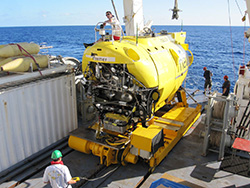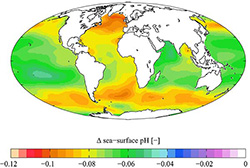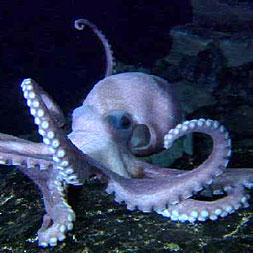The Adams Lab integrates across disciplines – ecology, physical oceanography, developmental biology - to consider how larval interactions with their dynamic environment contribute to species and ecosystem resilience. We work along the shores of the US East Coast, the shallow reefs of Southeast Asia, to the eruptive depths of hydrothermal vents to understand how larvae respond to the environment from the molecular to ecosystem scales. We are increasingly striving to apply our results to management and international development problems to conserve our ocean and improve the lives of those who rely on it.
Research in my laboratory is focused on the physiology, ecology and evolution of prokaryotes that inhabit geothermal environments. The overarching objective of my research revolves on the question: “how did microbial metabolism co-evolve along with our planet?” Extant thermophilic, anaerobic, chemolithoautotrophic Bacteria and Archaea that conserve energy and fix carbon using inorganic compounds associated with volcanic activity (e.g., H2, H2S, S0 and CO2) are completely disconnected from photosynthetic processes. While these deep-branching anaerobic thermophiles are modern organisms that co-evolved with our planet, they inhabit deep-sea hydrothermal vents and other geothermal habitats that can be considered relic environments similar to the early Earth. Hence, these microorganisms carry both ancestral and more recently acquired traits (genes and enzymes) and can be used as models to reconstruct early metabolism. To this end, in my laboratory we devote a considerable effort to “domesticate” some of the most fascinating organisms on our planet, and to use them as models to understand the evolution of early metabolism and the adaptations to environments that resemble the early Earth. I believe that there is no better way to get to know microorganisms “up close and personal” than growing them in the laboratory; the Deep-Sea Microbiology Lab culture collection currently includes over 400 pure cultures isolated from marine environments. After years devoted to isolating microorganisms from geothermal environments and studying their physiology, sequencing their genomes to infer metabolic pathways, formulate hypotheses and test them experimentally, and probing natural microbial communities using culture-independent approaches, new, exciting research avenues are opening up.
Environmental Biophysics and Molecular Ecology Lab
The Environmental Biophysics and Molecular Ecology (EBME) Laboratory at Rutgers, The State University of New Jersey is an interdisciplinary, multi-user research facility designed to explore the application of biophysical and molecular biological techniques to a wide number of environmental processes in both aquatic and terrestrial ecosystems. The EBME program bridges physical and biological sciences in the context of understanding how biological systems function and evolve in the environment. By its nature, the EBME program fosters collaboration between basic science faculty and students with engineering faculty and students in an academic environment. The program emphasizes research, undergraduate, graduate and post-graduate training, and continual development of novel methodologies and instrumentation. Over the past two decades, more than 100 researchers, post-doctoral candidates, graduate, undergraduate and high school students received training in photobiology, biochemistry and biophysics in the EBME program, and major advances were made in scientific understanding of photobiology in natural ecosystems.
The Center for Deep-Sea Ecology and Biotechnology is actively engaged in marine natural product discovery efforts. Objectives may be summarized as follows: (1) Collect organisms from a variety of deep-sea extreme environments (e.g., deep-sea hydrothermal vents, cold-water sulfide seeps, etc.); (2) screen extracts of newly-collected organisms and those within our extensive ultra-low frozen collections for a variety of bioactive compounds; (3) isolate and culture a myriad of microorganisms from a variety of extreme deep-sea habitats and screen these for bioactive compounds; (4) further fractionate and identify the structure of bioactive compounds; and (5) synthesize compounds for potential commercial development of pharmaceuticals, particularly those with anti-cancer activity.
 Adams Lab
Adams Lab

